Abstract
Pigeons received food when they emitted the number of responses specified by a fixed-ratio schedule, and the time specified by a fixed-time schedule had elapsed. The order of meeting the response and time requirements was irrelevant. In different conditions, stimuli signalled completion of one, both, or neither requirement. Ratio size interacted with stimulus condition to determine performance. When a stimulus signalled the end of the fixed-time period, under all ratios the birds tended to respond after the stimulus appeared. When stimuli followed both components, small ratios produced responding during the fixed-time period, and other ratios resulted in responses after the time period had elapsed. With either no stimulus changes, or with a stimulus correlated with completion of the ratio alone, responding first increased and then decreased as the ratio increased. Low and high ratios produced stable response frequencies and patterns in successive intervals. Intermediate ratios resulted in two types of performance. Intervals with long initial pauses and few responses during the fixed-time period were followed by intervals with short pauses and numerous responses and vice versa. The source of these dynamic effects was hypothesized to be number of responses per reinforcer in one condition and response-reinforcer contiguity in the other.
Keywords: dynamic effects, stereotypic effects, conjunctive schedule, fixed-ratio schedule, fixed-time schedule, stimulus control, ratio size, key peck, pigeons
Full text
PDF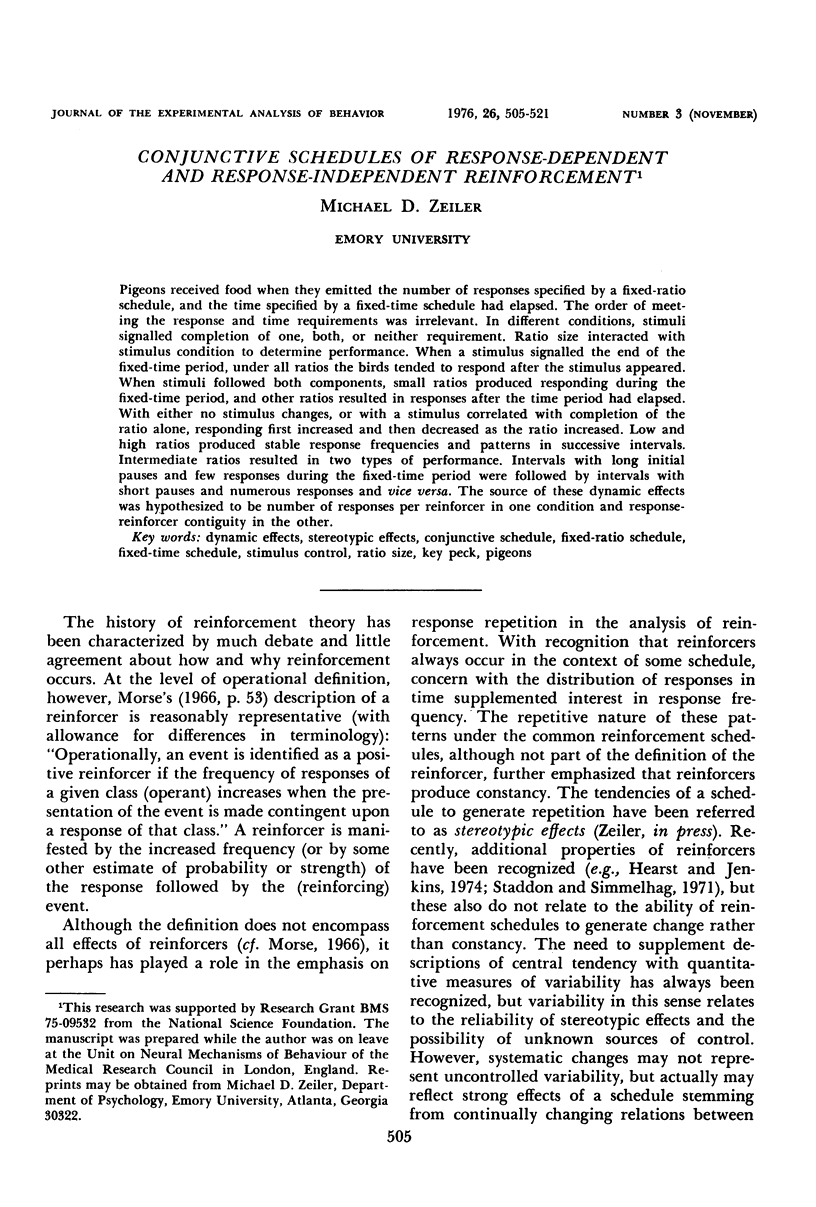
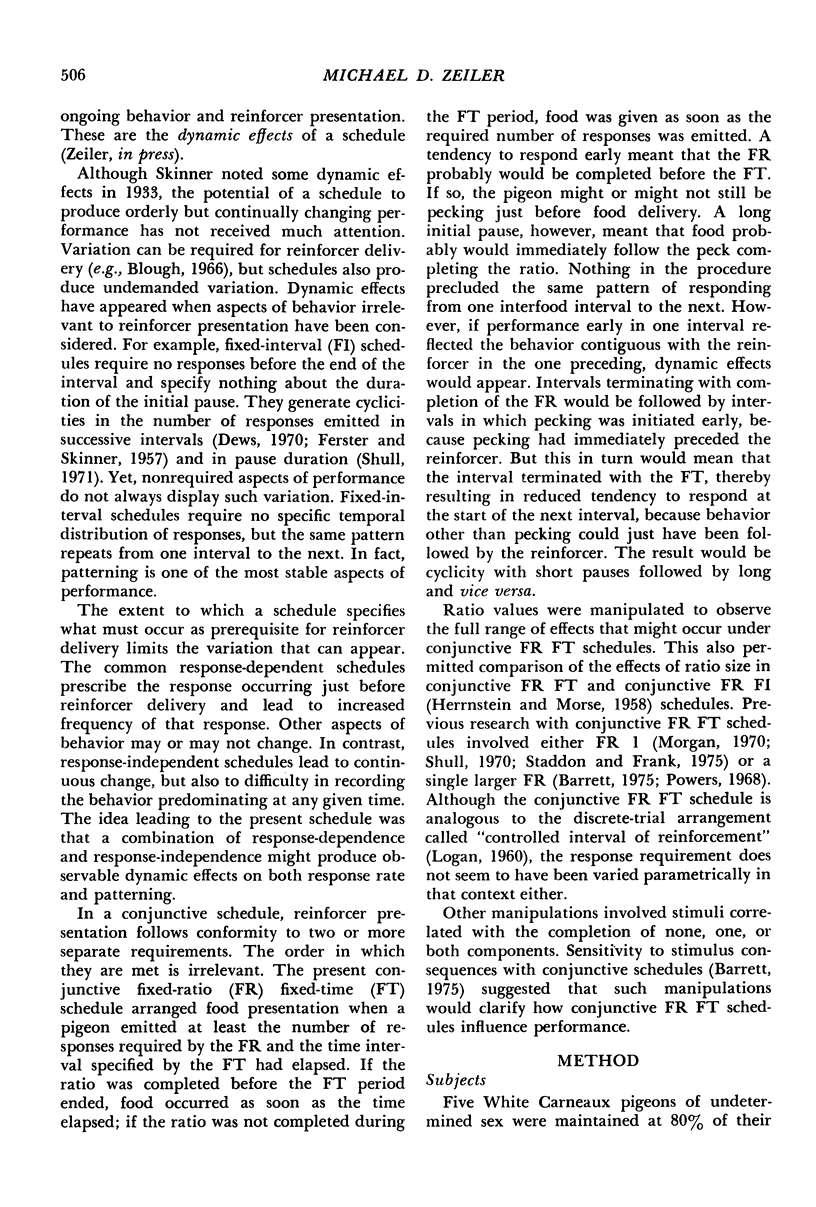

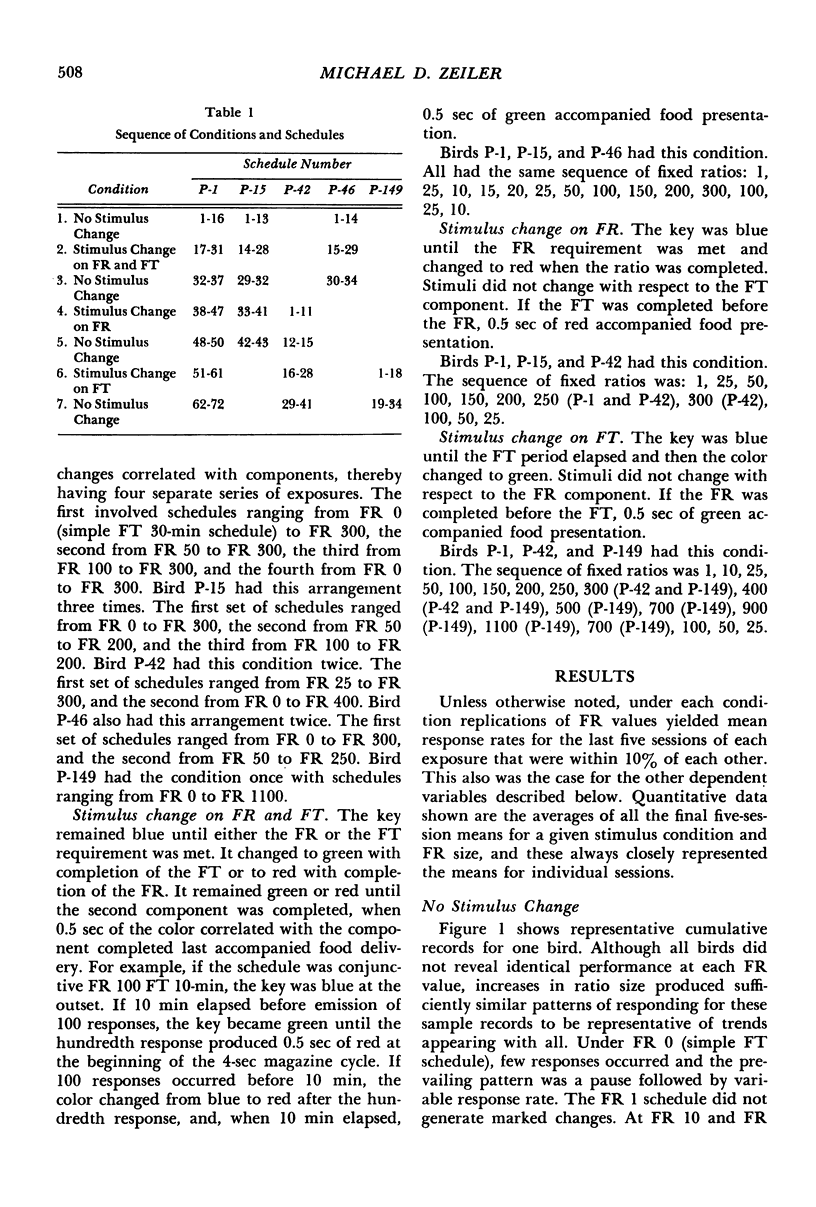
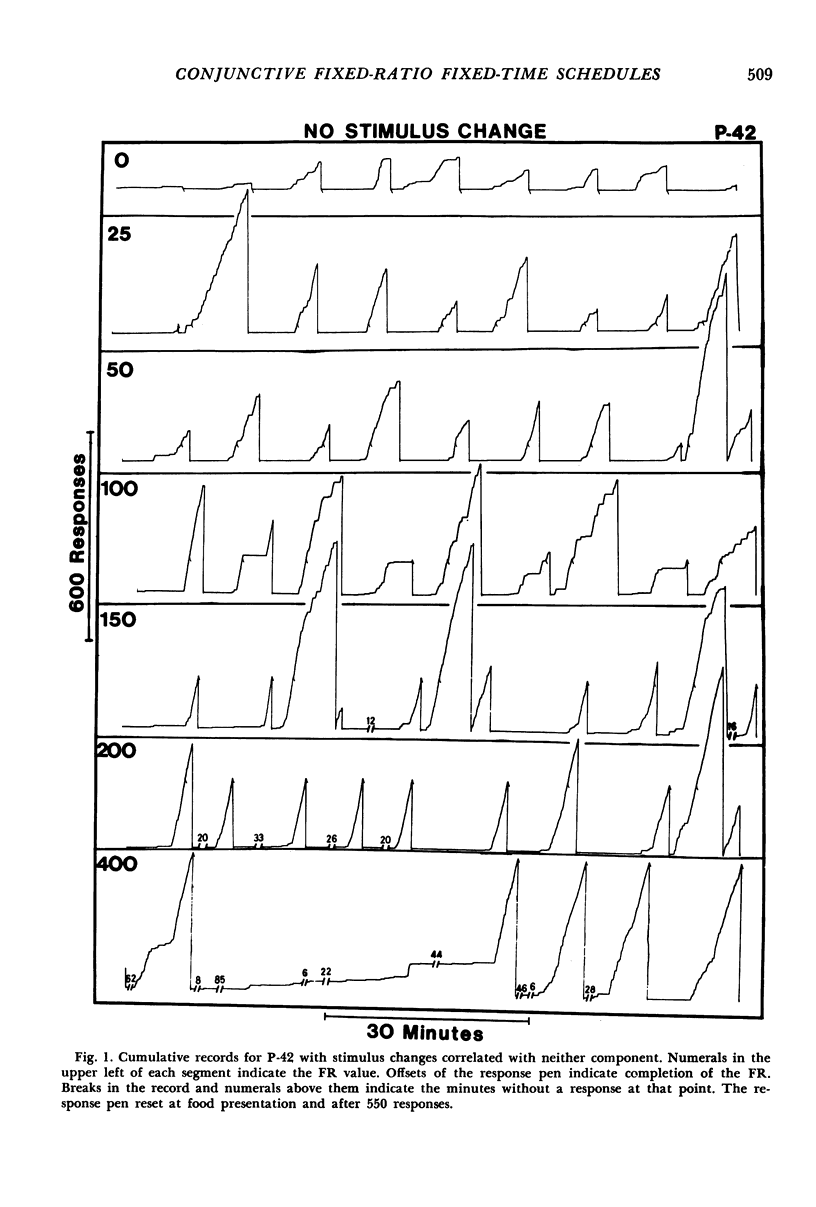
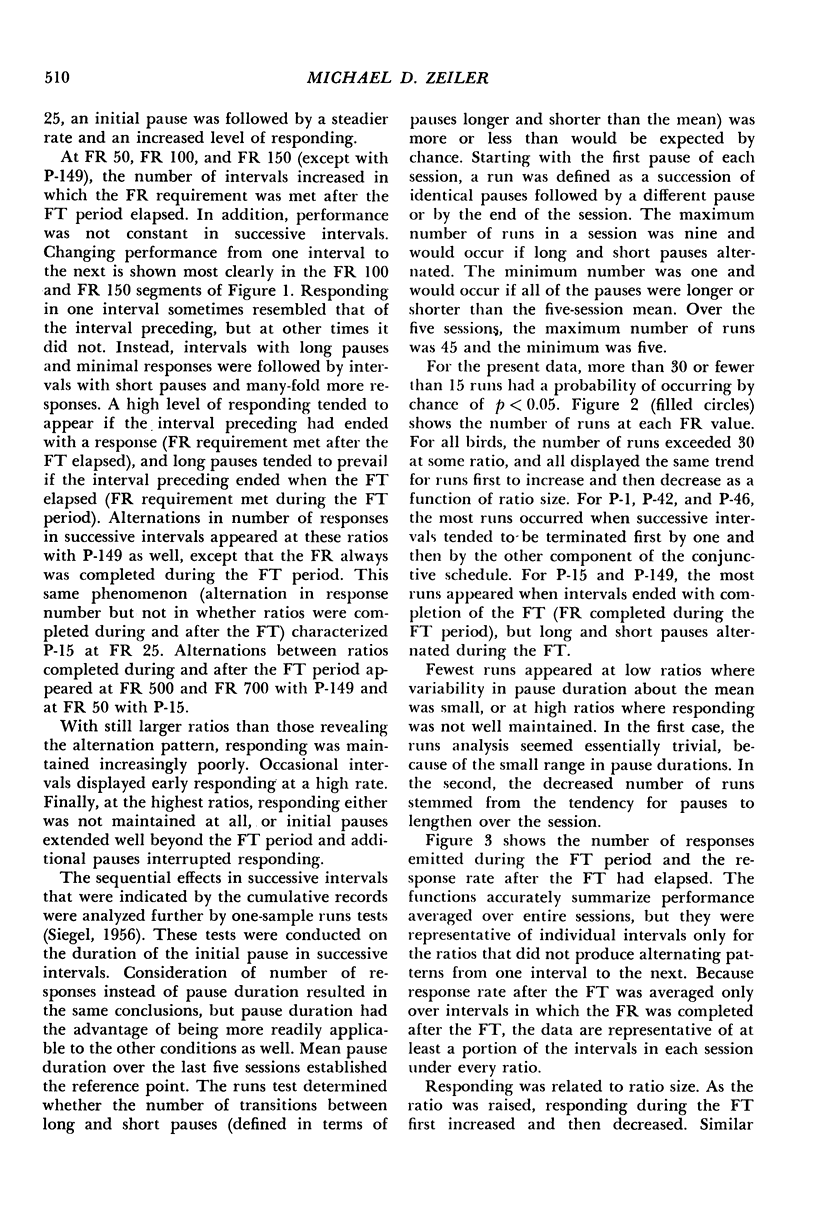


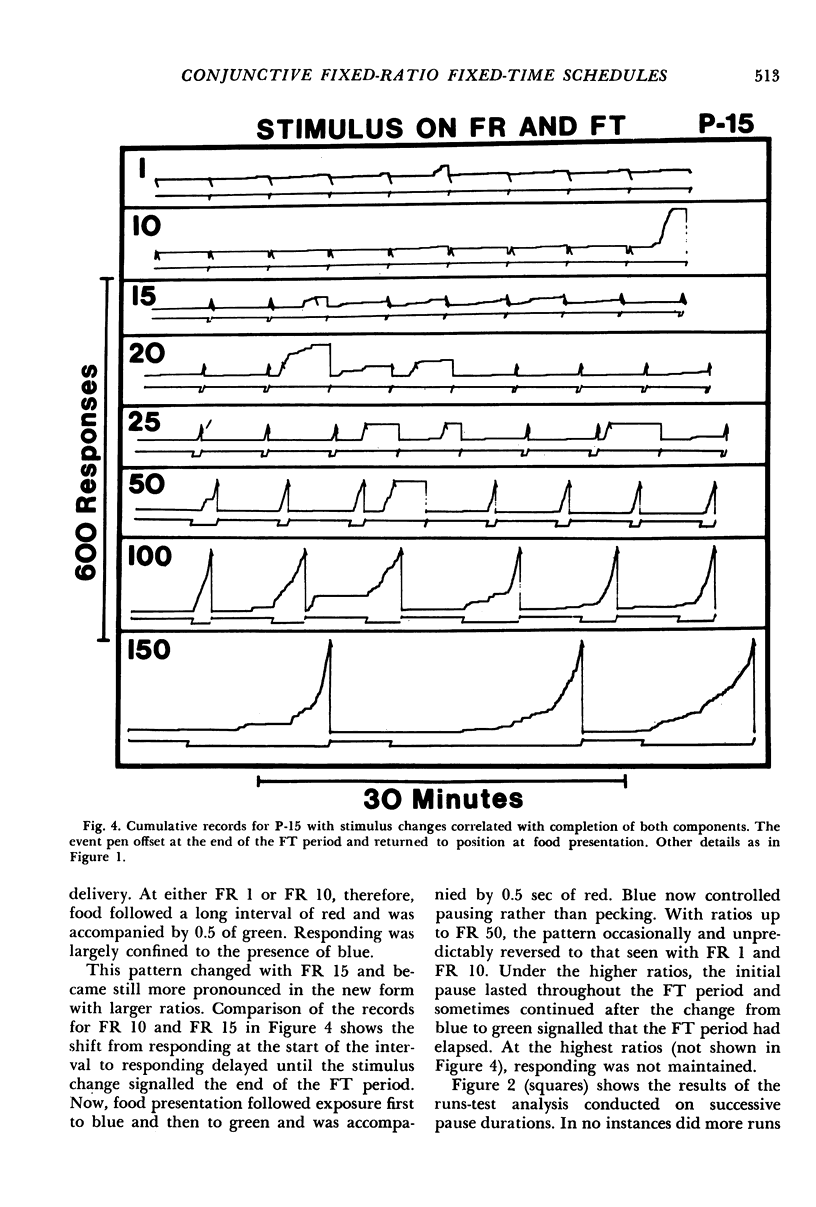
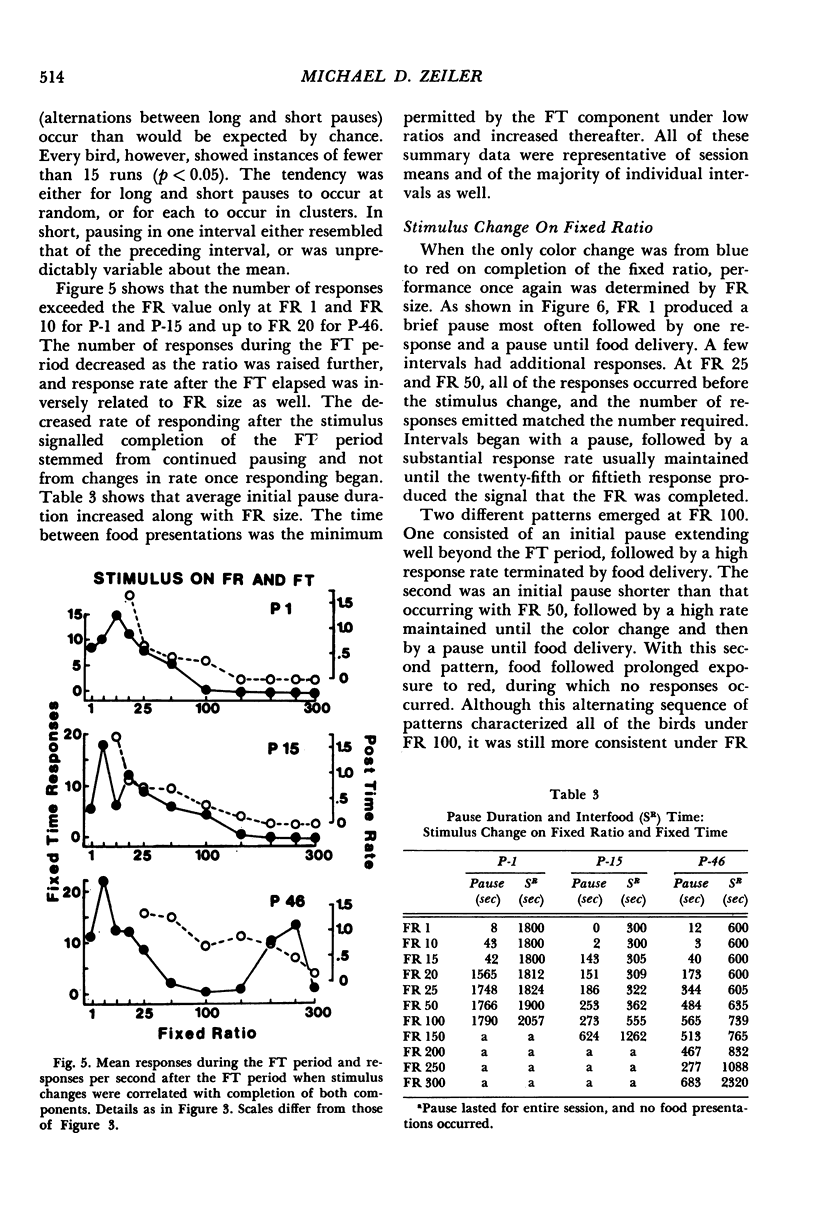
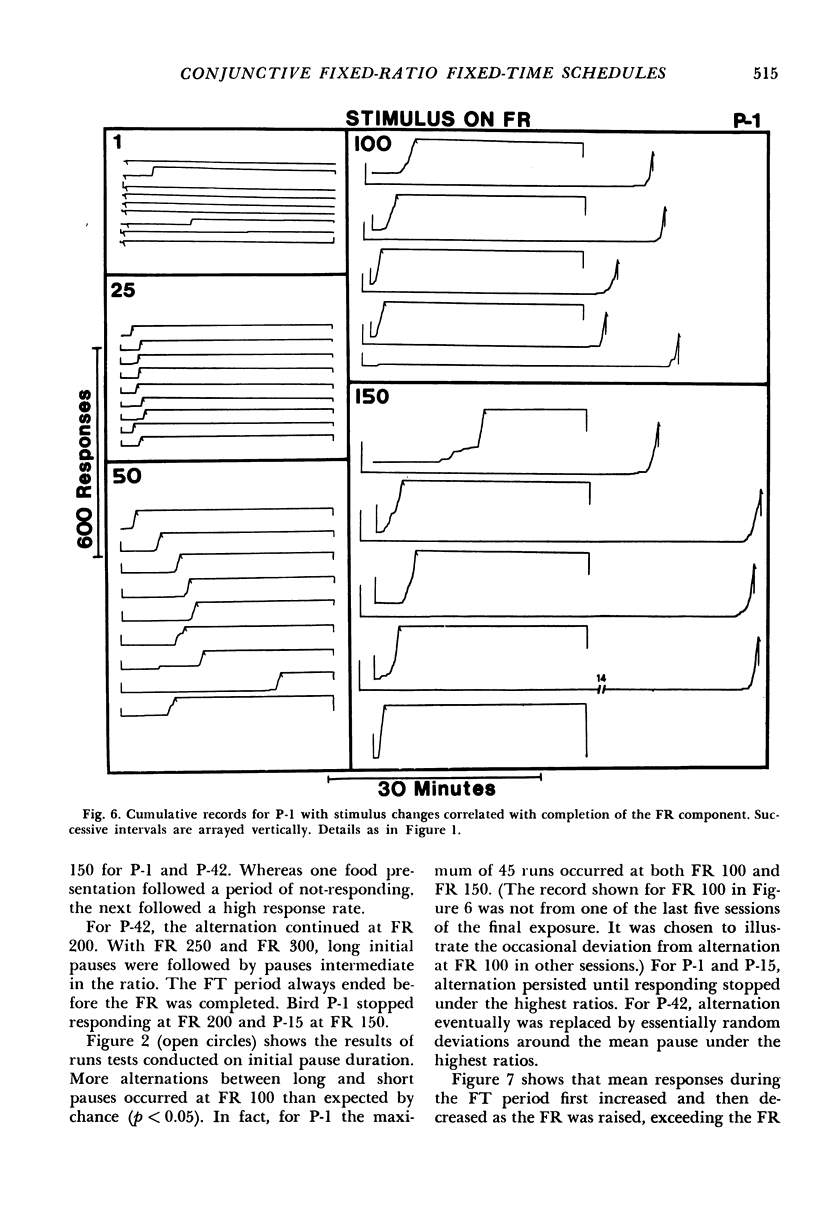
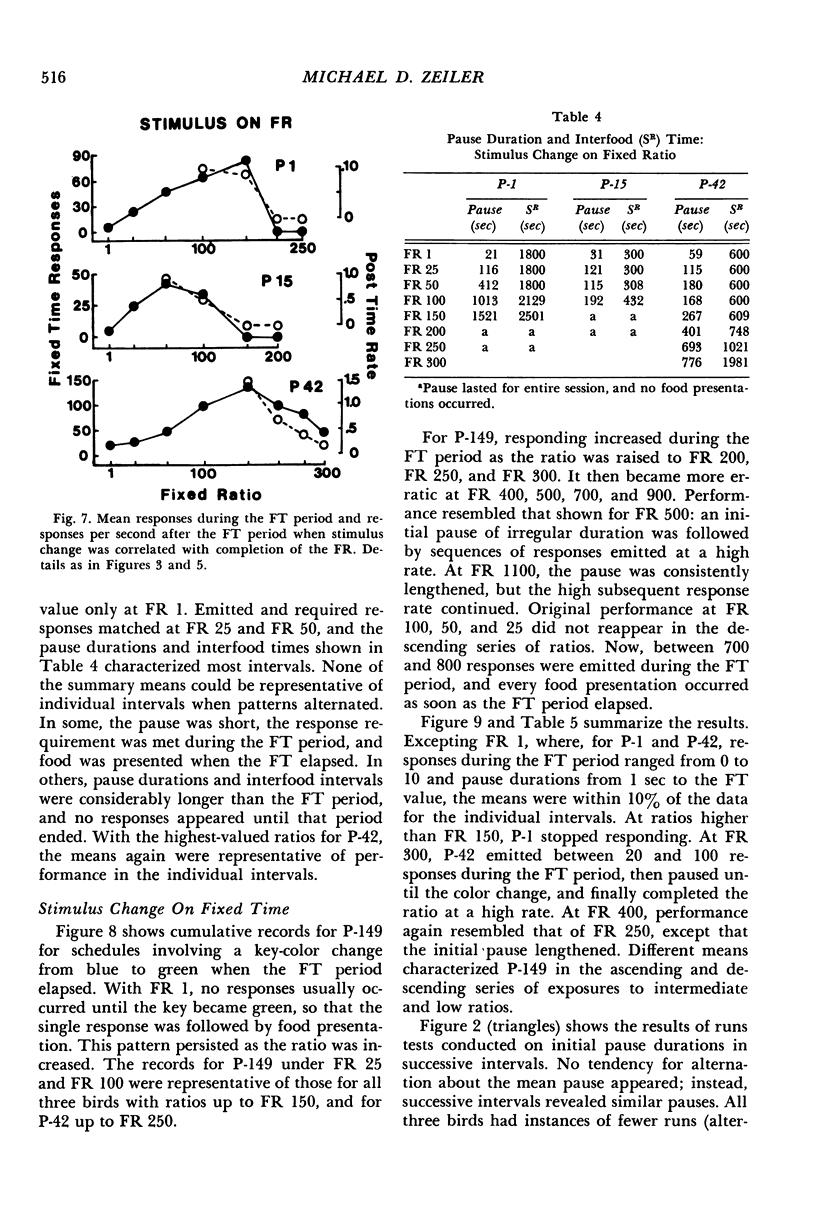
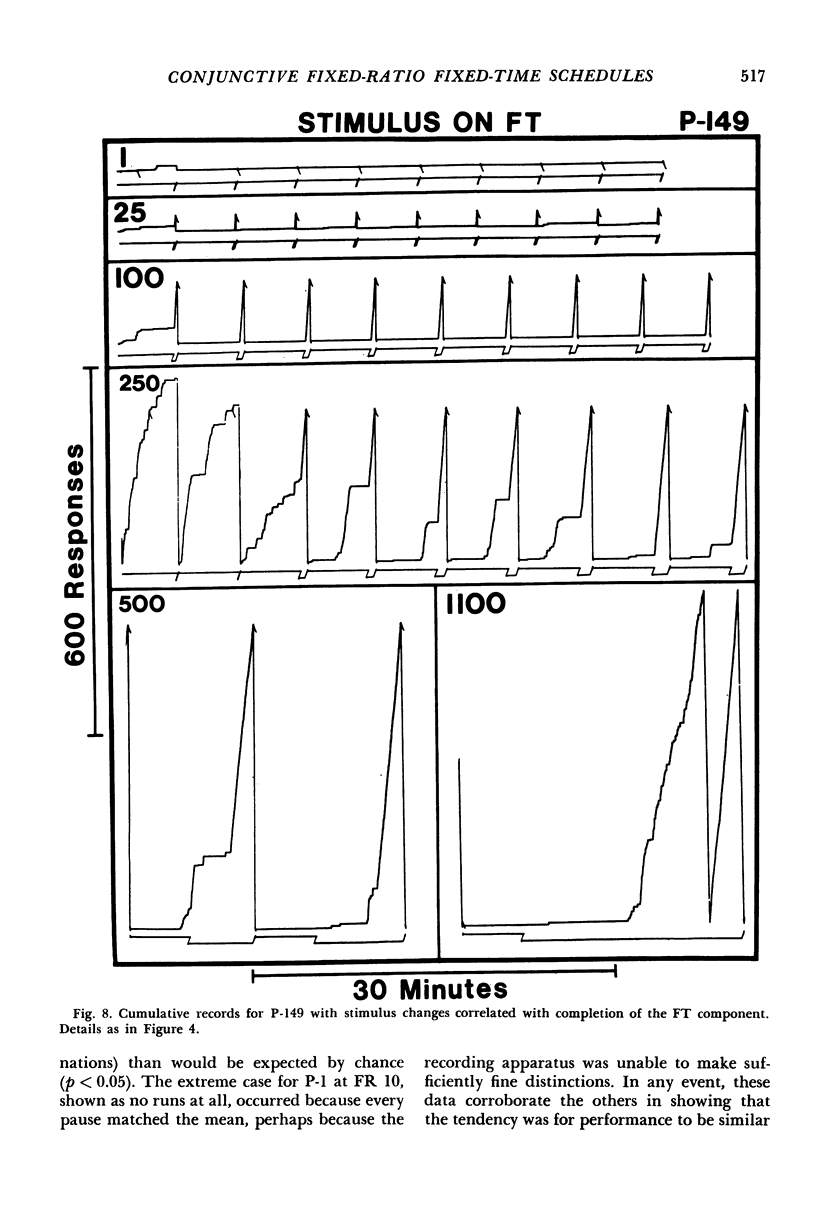
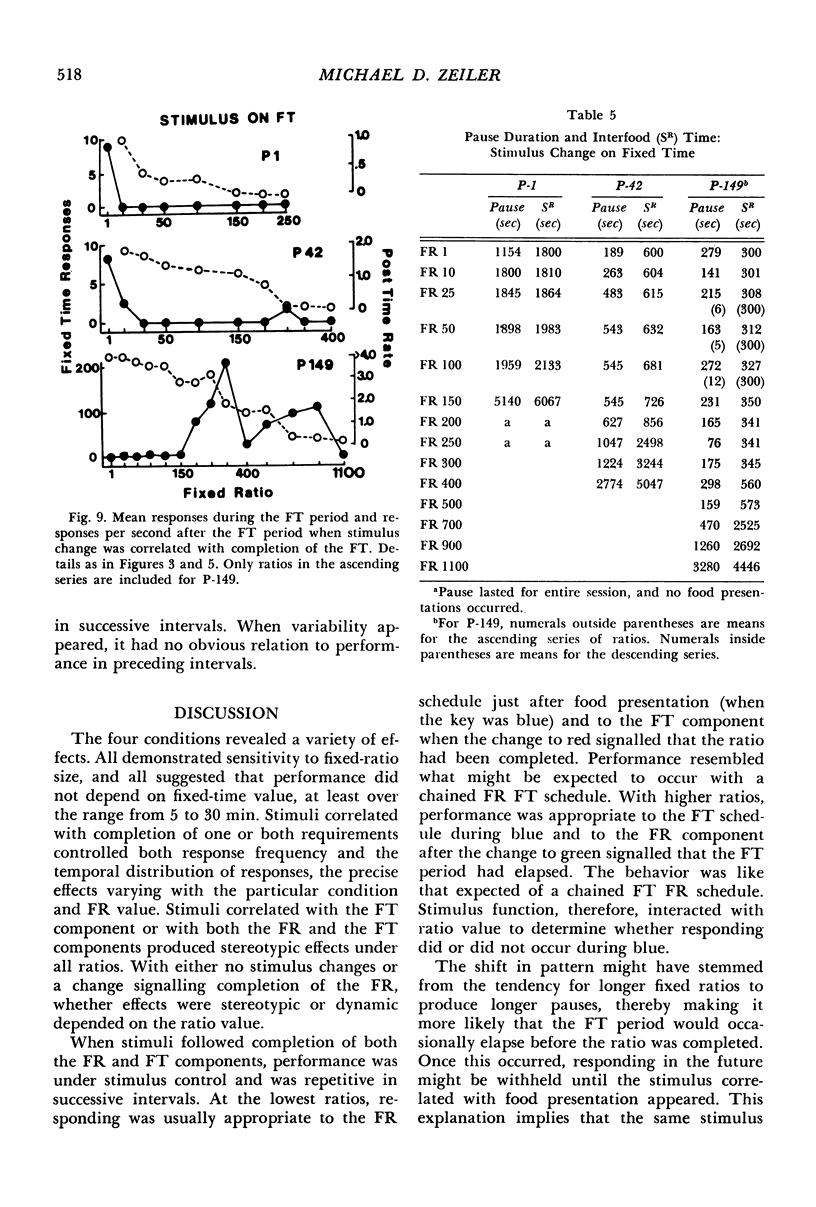
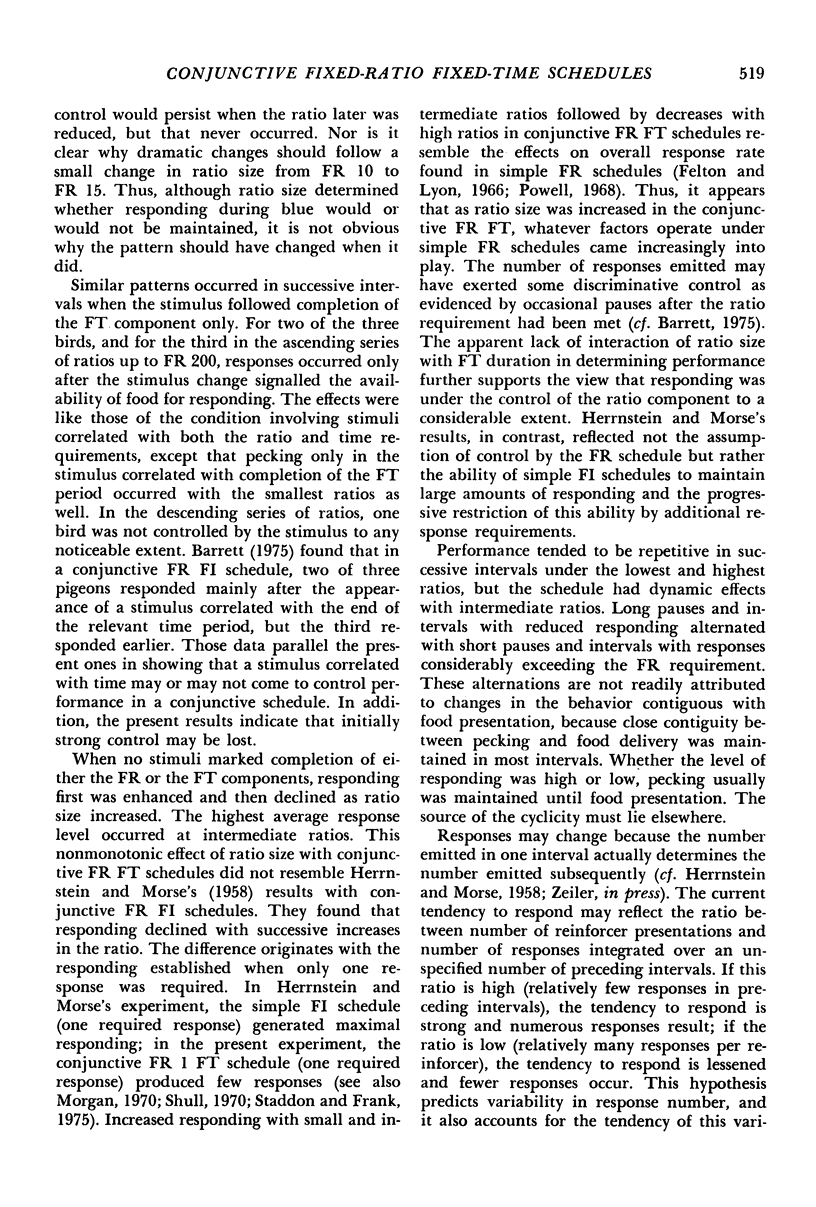
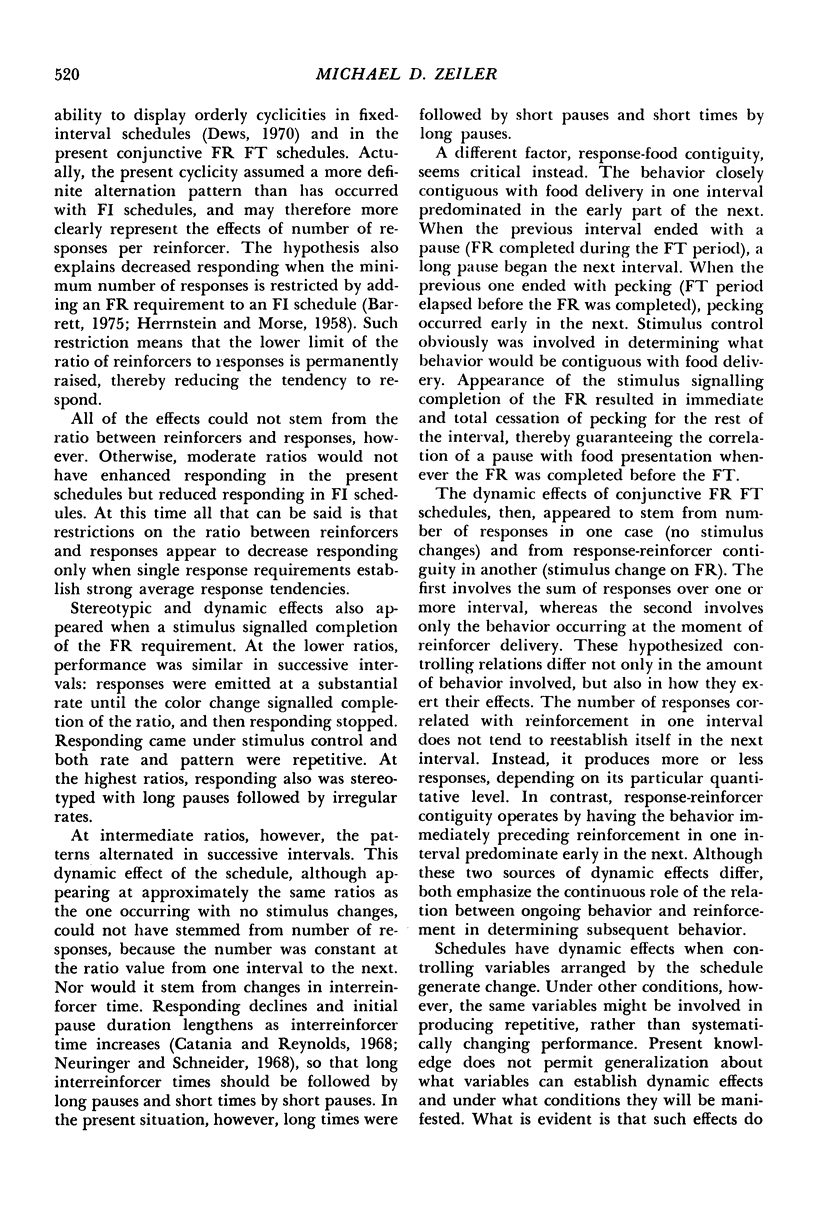

Selected References
These references are in PubMed. This may not be the complete list of references from this article.
- Barrett J. E. Conjunctive schedules of reinforcement II: response requirements and stimulus effects. J Exp Anal Behav. 1975 Jul;24(1):23–31. doi: 10.1901/jeab.1975.24-23. [DOI] [PMC free article] [PubMed] [Google Scholar]
- Blough D. S. The reinforcement of least-frequent interresponse times. J Exp Anal Behav. 1966 Sep;9(5):581–591. doi: 10.1901/jeab.1966.9-581. [DOI] [PMC free article] [PubMed] [Google Scholar]
- Catania A. C., Reynolds G. S. A quantitative analysis of the responding maintained by interval schedules of reinforcement. J Exp Anal Behav. 1968 May;11(3 Suppl):327–383. doi: 10.1901/jeab.1968.11-s327. [DOI] [PMC free article] [PubMed] [Google Scholar]
- Felton M., Lyon D. O. The post-reinforcement pause. J Exp Anal Behav. 1966 Mar;9(2):131–134. doi: 10.1901/jeab.1966.9-131. [DOI] [PMC free article] [PubMed] [Google Scholar]
- HERRNSTEIN R. J., MORSE W. H. A conjunctive schedule of reinforcement. J Exp Anal Behav. 1958 Jan;1:15–24. doi: 10.1901/jeab.1958.1-15. [DOI] [PMC free article] [PubMed] [Google Scholar]
- Neuringer A. J., Schneider B. A. Separating the effects of interreinforcement time and number of interreinforcement responses. J Exp Anal Behav. 1968 Nov;11(6):661–667. doi: 10.1901/jeab.1968.11-661. [DOI] [PMC free article] [PubMed] [Google Scholar]
- Powell R. W. The effect of small sequential changes in fixed-ratio size upon the post-reinforcement pause. J Exp Anal Behav. 1968 Sep;11(5):589–593. doi: 10.1901/jeab.1968.11-589. [DOI] [PMC free article] [PubMed] [Google Scholar]
- Powers R. B. Clock-delivered reinforcers in conjunctive and interlocking schedules. J Exp Anal Behav. 1968 Sep;11(5):579–586. doi: 10.1901/jeab.1968.11-579. [DOI] [PMC free article] [PubMed] [Google Scholar]
- Shull R. L. Sequential patterns in post-reinforcement pauses on fixed-interval schedules of food. J Exp Anal Behav. 1971 Mar;15(2):221–231. doi: 10.1901/jeab.1971.15-221. [DOI] [PMC free article] [PubMed] [Google Scholar]
- Shull R. L. The response-reinforcement dependency in fixed-interval schedules of reinforcement. J Exp Anal Behav. 1970 Jul;14(1):55–60. doi: 10.1901/jeab.1970.14-55. [DOI] [PMC free article] [PubMed] [Google Scholar]
- Staddon J. E., Frank J. A. The role of the peck-food contingency on fixed-interval schedules. J Exp Anal Behav. 1975 Jan;23(1):17–23. doi: 10.1901/jeab.1975.23-17. [DOI] [PMC free article] [PubMed] [Google Scholar]


